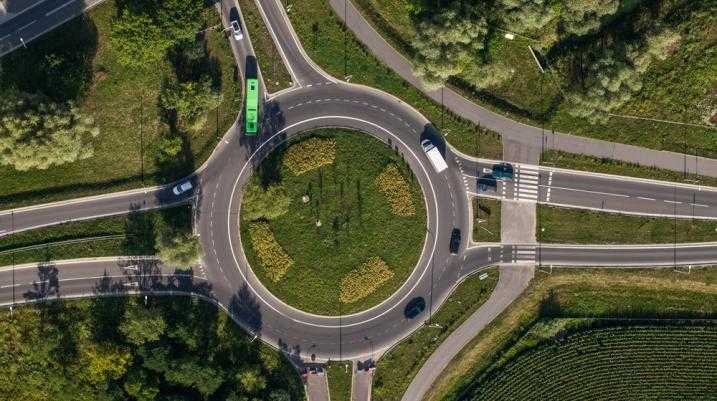Failure-to-Yield Accidents: Proving Negligence and Seeking Compensation

Following all relevant local and state driving laws is extremely important for protecting yourself and avoiding tickets. Unfortunately, far too many people find themselves suffering in a car accident when someone else wasn't paying attention or failed to adhere to the rules of the road. One common example of this is a “failure to yield” accident.
Every driver on the road has a legal responsibility, known as the duty of care, owed to other drivers. When a driver ignores this duty of care and causes others to get injured in an accident, that driver may be held legally responsible for injuries sustained by the victim and any other passengers who were hurt.
A failure-to-yield car accident lawyer can assist you with every aspect of your personal injury claim, including recovery of compensation for your damages and injuries. At Morgan & Morgan, we know what it takes to prove liability and get our clients the compensation they deserve for their needless suffering. In over 35 years of experience, our law firm has recovered over $20 billion for victims.
If you’ve been hurt due to someone else’s failure to yield, you may be entitled to compensation that can be used to cover medical bills, car repairs, lost wages from missed work, and other expenses. You shouldn’t be the one to suffer the consequences of someone else’s bad driving. To learn more about how we can help, contact Morgan & Morgan today for a free, no-obligation case evaluation.
How Do I Show Liability in an Accident?
A failure-to-yield accident happens when someone does not give the right of way to another pedestrian, bicyclist, or driver. This failure can lead to devastating collisions that can cause lifelong injuries or even fatalities. In many cases when an accident involves more than one vehicle, another car will strike the car that didn't yield.
Failure to yield accidents, as your car accident lawyers at Morgan & Morgan can tell you, can frequently happen when a driver comes upon a flashing red stop light or tries to turn left when the way is not clear.
Drivers who come onto a street from out of a private driveway may also fail to yield, in addition to those drivers who fail to give pedestrians the right of way when that pedestrian is in a crosswalk.
Someone who is seriously injured in a failure-to-yield accident may sue an at-fault driver for damages. These damages are designed to enable the victim to be made whole again after the accident. Unfortunately, many victims who are seriously injured in these wrecks will never be able to fully recover from the injuries they have sustained.
To prove liability against the at-fault driver, you can begin by communicating with an attorney as soon as possible after you have been hurt, and this may be your best chance to recover the compensation that you need. Sharing any pictures or other evidence that you were able to collect from the scene can help immensely, but sometimes there isn’t an opportunity to do this in the midst of a bad accident. At Morgan & Morgan, we often send experts to the scene of the accident to investigate and reconstruct the event to prove liability.
How Does Negligence Play Into a Failure to Yield Accident?
Negligence is a word that relates to someone's lack of care, and it is typically a theory applied in a failure-to-yield crash case. As the victim filing a lawsuit, you would allege that the negligence of the other driver caused the crash because they failed to yield and ultimately caused you to suffer injuries. It is your responsibility as the victim to show causation, which means you need to submit evidence that the other person's actions caused the accident.
A victim also needs to show that the injuries they suffered were a reasonable consequence of the driver's failure to yield. It can be very challenging to gather and present the right evidence showing the factors of the crash. A car insurance company representing the defendant, or the defendant directly, may argue that they had the right of way. In many cases, your car accident lawyer, like those working at Morgan & Morgan, will communicate with accident reconstruction experts to review this evidence, such as witness testimony and skid marks to provide opinions about how the accident happened.
This could make a substantial difference in the outcome of your case, and it is a leading reason why Morgan & Morgan has such a strong reputation for representing victims in failure to yield accidents.
What Kinds of Damages Can I Retain?
A typical failure-to-yield accident may enable the victim to recover several different kinds of damages. This includes all expenses directly associated with the accident, such as medical costs for physical therapy, hospital care, and expenses related to in-home care may come up as compensatory damages. Depending on your location, you may also be eligible to recover pain and suffering damages and damages for the enjoyment of life. If you have also suffered a difference in your earning capacity because of this incident, you may be eligible to recover the difference in your wages based on past earnings.
How Do I Pay an Attorney?
You may be curious about paying a lawyer for their services in your case. The lawyers at Morgan & Morgan have extensive experience helping victims of car accidents, and we know how challenging it can be to try to move on by yourself. That’s why we work on a contingency fee basis. This means that we do not accept upfront payment or retainer to work on these cases.
Instead, we take a percentage of your awarded settlement winnings or jury verdict outcome. That’s right—our fee is free. You only pay if we win.
To get started, contact us today for a free case evaluation.
Injured? Getting the compensation you deserve starts here.

Deep Dive
Explore more information related to the case process.